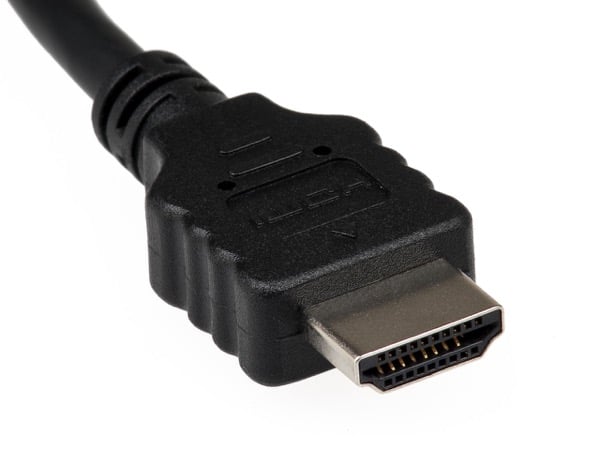In practice, different signals such as human voice, natural sounds, pressure, and temperature that have already been converted into a digital form (binary code), can be modified using a digital signal processor into a form that can be used by another output device. Digital signal processors achieve effective input signal modulation as well as accurate digital (output) signal production by performing multiple complex calculations very rapidly.
Key Components of a Digital Signal Processor
To effectively function, every digital signal processor must contain the four key components listed below:
-
Computing engine
-
Data memory
-
Program memory
-
Input and output
This setup functions in a fluid continuous manner to systematically gather, analyze and transmit both analogue and digital signals. The information produced by digital signal processors can be represented as discrete frequencies, time or other measurable variables.
Computing Engine
This component of the digital signal processor (DSP) is responsible for signal math analysis, computation, and processing. Significantly large amounts of signal data can be rapidly done by accessing information held within the program and data memory banks.
Data Memory
A data memory component holds the information to be analysed and processed in temporary storage in its digitized form. When required it provides the data to the computing engine for manipulation.

A motherboard for a notebook computer.
Program Memory
This unit stores commands which are carried out by the computing engine unit. The program memory essential stores and dictates the tasks that are required from the digital signal processor.
Input/output
Signal input and output channels are vital aspects of digital signal processing as they provide a conduit for the data entering the processing unit. The type of input/output devices used varies between signal processor types and includes serial ports and external ports.
Advantages of Digital Signal Processing
When compared with the use of analogue processing technology, digital signal processing devices offer various advantages. To begin with, DSPs offer greater flexibility in terms of calibration and modification.
Although an analogue processing unit might be cheaper to assemble, modifying finished units to process different signals is difficult as it would require rearranging its parts. A DSP is unaffected by this problem as it runs on easily reprogrammable software.
Further, DSP unit house programmable computer chips much less likely to become faulty and require replacement than the amplifiers, transistors and other physical components present in analogue signal processing equipment.
Signal Converters: ADC & DAC
Signal converters play a critical role in signal processing. These devices function in tandem with digital signal processor units to carry out efficient signal modulation. Signal converters are responsible for converting real-time signals (temperature, sound, light) into analogue and digital forms that can be utilized by a DSP.
A signal converter interface can either be an analogue to digital converter or a digital to analogue converter. Each of these signal converter types plays a unique but critical role in digital signal processing.
Analogue to Digital Converters
Analogue to digital converters (ADCs) function at the interface between a real-time signal and its digital representation. These devices receive the raw signal and convert it into a digital binary form recognizable by a DSP unit.
Digital to Analogue Converters
Unlike ADCs, digital to analogue converters (DACs) do not receive raw source input but modified digital signals generated by a digital signal processor. DACs convert the digitized signals they receive into an analogue form that an end device can translate and transmit in real-time.

A sound mixer.
DSP Applications
Digital signal processing is useful in a broad range of electronic engineering applications. DSP technology can be found in audio and video compression devices, voice processing and recognition, radar/radio detection equipment, sonar, and other sound-based ranging systems.
Medical Diagnostics
Digital signal processing is critical to the proper functioning of various medical diagnostic devices such as magnetic resonance imaging (MRI) scanners and computerized axial tomography (CAT) scanners. In these instances, signals projected off the bodies of patients are modified into a digitized form that can be displayed as images on a screen for physicians to interpret.
Radar/Radio Detection Equipment
DSP devices incorporated into radar and other radio equipment allows the detection of signals emitted by aircraft within their effective range. DSP technology provides air traffic controllers with rapid real-time information on flight patterns that allow them to do their jobs safely.
Sound Engineering
DSP applications in sound engineering are quite numerous. Most versions of sound conversion from microphones to loudspeakers and other acoustic devices use dedicated DSP units to achieve a seamless transition. Speech coding and broadcast in mobile phone technology also have DSP units. In music production, sound engineers also utilize sound equalizers and synthesizers that operate with digital signal processing technology.
Seismic Data Analysis
Seismologists rely on computer-based data to study and predict the severity or the significance of earth waves. The data generated by seismometers can be converted into digital signals, analyzed and presented in a useful form. Early warning seismic systems that utilize DSPs can help affected authorities in affected areas prepare lifesaving emergency evacuation protocols.
The Relevance of Digital Signals Processing
Digital signals processing is an essential aspect of electrical engineering with a vast range of technological applications in manipulating electronic signals such as video, voice, audio, pressure, temperature and many more. This article has given a foundational knowledge of DSP, including components, advantages and applications. Electrical engineers interested in pursuing a career in this field will be exposed to a multitude of specialisations where DSP systems continue to be relevant.





